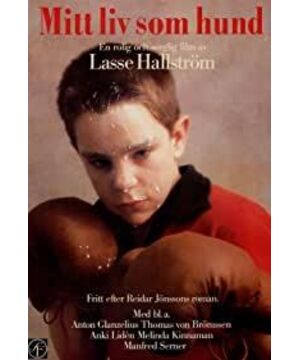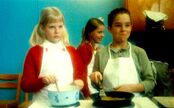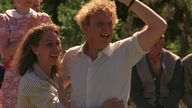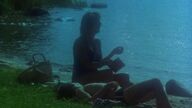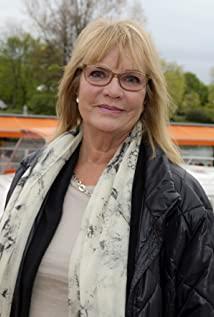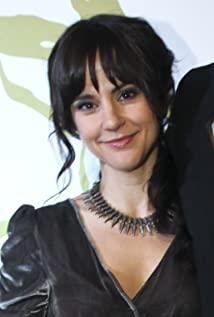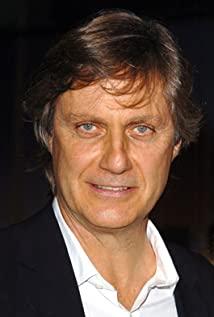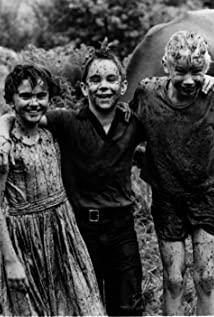This film is a children-themed film shot by director Ruther Hollstrom. It uses an intertwined approach of tragedy and comedy to portray the joys and misfortunes in the life of the young protagonist Ingmar, as well as the various adult worlds that surround him. After the film was released, it not only received a warm welcome in Sweden, but also aroused an unprecedented response in the hometown of Hollywood, the world's film capital. The film was screened as the finale at the closing ceremony of the first Washington International Film Festival, and then became one of the best-selling films in the United States in 1987. Its achievement is not only that the film shows the excellent traditions of Swedish film, but also shows people the artistic taste and charm that a child-themed film can achieve in the kaleidoscope of exploration and practice of contemporary film.
The film starts with the unfortunate experience of the young hero Ingmar and takes the audience into a story that is intertwined with sadness and joy. This naughty little boy is lively and active, but his heart is always full of a sense of abandonment. He actually does not have a father (according to the film’s explanation, his father works in the remote tropics, and it seems that he will never come back). The only mother who loves him is seriously ill and can no longer give him care and love. His brother is Keep making some pranks to tease him. At home, he can only often lead his beloved puppy Xikan and the little girl from the neighbor's house on the street, or even wandering in the wilderness. However, even this kind of life did not last long. Soon, he lost his beloved puppy, then his mother, and almost lost his home at Uncle Guernal and his new friend Saga... This series of tragic plots is over. It is enough for the director Holstrom to construct a story that makes the audience burst into tears. However, Holstrom uses a style of European film to make the lens constantly travel through the plot of the film, showing the lonely and unique spiritual world of Little Ingmar.
In fact, Holestrom almost always surrounds the story circle in the frame of Little Ingmar's psychological world. The film begins with a sad monologue by Little Ingman: "...If you think about it, things are not bad..." This flashback and monologue constitute the real fulcrum of the film: Little Ingman In the misfortune of life, Ma strives to find a psychological support for herself. This is his kind of "comparative method". He always compares his experience with the more unfortunate stories, so as to comfort his soul. As a child-themed film, Holstrom adopted a concise and clear way of expressing this psychological content of Little Ingmar. He kept pulling the film from those sad or happy life scenes back to the lonely voice of Little Ingman. It sometimes becomes the continuation of an emotional tragic experience of the little protagonist, and sometimes forms a very contrasting contrast with his temporary happiness, so that the audience is always reading the little Ingmar full of sadness as the story progresses. Heart. During this period, the flashback shots of the opening film also appeared occasionally. The joyous scene of Little Ingmar with her healthy mother is so short-lived that it strengthens the misfortune in reality that Little Ingmar feels. However, Holstrom is not just a direct inner monologue or a psychological flashback to show the little protagonist’s psychology. With this psychological process, we will soon discover that he is also using a series of the same The obvious image establishes a metaphorical expression for the inner world of Little Ingmar. Among them, an obvious image is that of Uncle Ennar’s house that resembles a rocket about to be launched. This small house has actually become a metaphor and epitome of Little Ingmar's spiritual world. When Little Ingmar was hurt in his heart, he shut himself in this hut, chewing on the pain in his heart alone. The rocket-like appearance of the cabin obviously reminded him and us of the spaceship that he often remembered of flying into space with the poor puppy Lycra. It has become an expression of Little Ingmar's own destiny in his heart. Another metaphorical image that always accompanies the film is naturally Ingmar's beloved puppy Sikan. It is like little Ingmar at least the feeling of her own destiny in her heart, finally abandoned. This, of course, once again made Little Ingmar and it and the Russian puppy Lycra a psychological identification. So, when the little Ingma clashed with Saga and his anger and sadness reached the culmination, we saw one of the most shocking scenes in the film: little Ingma suddenly lay on the ground, like a puppy. Screamed endlessly. It can be said that this scene concentrated all his sad feelings
From Holstrom’s depiction of the inner world of Little Ingmar, we can also notice another interesting fact, that is, with the inner monologues and memories of Little Ingmar, which was the beginning of the film, and the continuous Repeatedly, the film has actually become a story told by Jr. Ingmar and director Holstrom. What follows is a kind of "dissociation" of the film's point of view, or the establishment of a dual point of view: we are not only following the director's vision to observe the inner world and life of Young Ingmar, but also through his Eyes and hearts come to see and feel the adult world that surrounds it. It is intertwined with love and sorrow, but also with joy and sorrow. What embarrass us is that this world is as full of contradictions and a bit of mystery, even insoluble in the eyes of Young Ingmar. The strange residents in the small village where my home is located-including him). It puts the audience in an almost equal position with Little Ingmar, and together they can get a sense of life. It also allows the film to get rid of the trouble of just surrounding or raising a certain social issue, and reach a certain philosophical level. At the same time, through the experience and vision of Little Ingmar, Holstrom turned the scene of the film from the more realistic home where Little Ingmar lived with her mother and brother to the area of Uncle Guenner’s house. A somewhat magical "Wizard of Oz" rural world, which uniquely combines a true depiction of daily life, a depiction of the hero's psychological content, and a kind of adventure and legend in the tradition of children's film. , Constructing a screen world that is both real and full of fantasy. It undoubtedly brings a richness and fun to the film.
Related to this, another feature of the film is the fusion of tragicomedy techniques and Holstrom's excellent grasp of the delicate boundary between tragedy and comedy. Little Ingmar's experience is unfortunate, but at the same time he is an active and mischievous "scourge". Through the tragicomedy approach, the film always maintains a balance between the image full of fun and sympathy for the heroine. In the film, tragedy and comedy are often closely linked, and even combined in the same action, making people burst into laughter and tears at the same time. For example, after Xiaoyingma's "trouble", because of fear of returning home to cause her mother to get angry, she wandered in the suburbs alone with her puppy. At this time, his childish face and lonely figure couldn't help but feel sad. However, when he tried to set a fire on a garbage dump to keep his puppy shivering in the cold wind from freezing, it caused a raging fire and made him feel at a loss. The tragic scene immediately transformed into a comedic plot. Holstrom's tragicomedy approach also gave Young Ingmar a character full of children's interest while showing the sadness in his heart. His "comparative approach", which constantly compares his own experience with the fate of other unfortunate people, is sad and has a sense of comedy full of children's appeal. It allows people to see the image of a child who has suffered misfortune and tried every possible way to escape grief psychologically. And this kind of humorous comedy technique enabled Holstrom to finally give Young Ingmar a comforting ending without revealing a trace. Little Ingmar, who lost his parents, finally not only comprehended the love in life from the actions of the villagers, but also finally completed his understanding of the surrounding world from the "knowledge" of another comic character in the film, Uncle Guernal. Agree. That humorous and comical Uncle Gunnar is also a kind of "disaster" in his family. He often makes many pranks to make his wife "crazy". This gave him a "parallel" position with Little Ingmar, and the songs he often played enabled Little Ingmar to establish a certain connection between him and his father. Through his "knowledge", Little Ingmar found himself in him, and also found his father who was far away in the tropics; he finally had a home where he could feel safe.
Swedish film has been brilliant for several times in the history of world film development, and it occupies a unique and important position. The creation of children's films has a long tradition. As early as the 1920s and 1930s, Sweden had a series of long feature films featuring mischievous children. By the 1940s, when children’s films in some major European film countries had just started, Swedish children’s films had already started. A development trend with considerable potential has been formed, and it has won an international reputation in the 1950s. During this period, the Swedish film industry has emerged such as Rolf Hesberg, Arne Sachsdorf, Ollie Heilbaum and other directors who have made outstanding achievements in the field of children's film creation. Among them, Saxdorf has won the Oscar for his short films, and Helbaum is the most famous Swedish director in the world after Bergman. The development of Swedish children’s films benefited from the attention to children’s life, children’s culture and children’s psychology in its cultural traditions, as well as the peaceful, stable and prosperous living environment created by its long-term international neutral policy and high-welfare society. , Which naturally makes people pay more attention to the growth of the next generation. Of course, it also comes from Swedish film artists' unremitting exploration of children's films. Children’s movies can generally be roughly divided into two categories. One is "children’s entertainment films" specifically shot for children, such as children’s fantasy films, children’s detective films, and children’s adventure films. The other is based on children’s lives. It's actually a movie for adults to watch. They mostly focus on the growth of children, the living environment of children and the social problems associated with them. "My Life is Like a Dog" falls into this category. This kind of film occupies a major position in Swedish children's film creation. Especially since entering the 1980s, there have been continuous masterpieces and innovations. The director of the film, Ruther Holstrom, is one of the more influential directors in contemporary Swedish comedy films. His main works are "Boy Meets Girl" (1975), "First Father" (1979), "Our Happy" (1983) and so on. This film is a new breakthrough in his creation, that is, he began to incorporate a moving and tragic style into his previous comedy style. It is also considered to be the representative work of Swedish children's films in the 1980s.
View more about My Life as a Dog reviews


